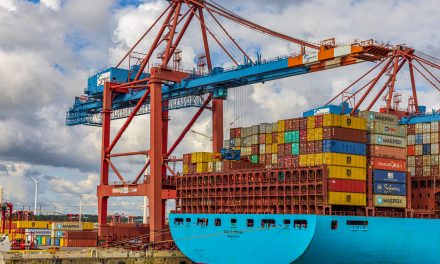Inflation in Singapore was unchanged in May, official figures showed on Monday, as higher prices in the Services sector were offset by cooling Electricity & Gas inflation.
The Monetary Authority of Singapore’s core inflation figure, which excludes accommodation and private transport, for May came in at 3.1% on a year-on-year basis. This was unchanged from the month before. On a month-on-month basis, core CPI went up by 0.1%.
The core consumer price inflation figure rose by 0.1% in May compared to April.
Central banks closely monitor core CPI to inform monetary policy decisions. A stable core CPI helps central banks decide whether to raise or lower interest rates to control inflation or stimulate economic growth.
The headline figure, which includes accommodation and private transport, rose to 3.1% in May from 2.7% in April. The headline CPI provides a complete picture of overall inflation.
“The MAS maintained its headline and core inflation projection at between 2.5% and 3.5% for 2024, which will be down from 4.8% in 2023,” S&P Global Market Intelligence told Diplomatic Network (Asia) in an interview on Tuesday.
“This decline will mostly come from slowing private transport inflation and easing accommodation inflation due to an expected increase in housing completions.”
External factors
Global energy, food, and imported goods have helped stabilize inflation.
“Global prices of energy and most food commodities have remained relatively stable in recent months. The costs of Singapore’s imported intermediate and final manufactured goods have also continued on a broad decline,” MAS said.
In addition to this, Inflation for services related to overseas travel has remained steady but is expected to decrease as the global air transport and hospitality sectors gradually increase their supply over the year.
Domestic front
Domestic unit labor cost increases have slowed with the cooling labor market.
“Nonetheless, businesses are likely to continue passing through the earlier increases in labor and other business costs to consumer prices, albeit at a reduced pace,” MAS said.
This has become a recurring theme over the last few months.
In the May S&P Global Singapore Purchasing Manager’s Index, released early June, Economics Associate Director at S&P Global Market Intelligence Jingyi Pan expanded on rising labor costs.
“May PMI showed the rate of input cost inflation eased to the lowest since November 2023 in Singapore, attributed mainly to falling purchase price inflation while wage costs increased at a quicker pace,” Pan said.
The reduction in purchase price inflation indicated that the cost of materials and goods needed by businesses has decreased, leading to lower production costs. However, this benefit was somewhat offset by the quicker pace of wage cost increases, likely due to the “tight labor market”.
Deep dive
Private Transport inflation heated up by 2.8% year-on-year in May, from 0.3% in April, due to the prices of cars and motorcycles rising and petrol prices increasing at a faster pace.
Services inflation was slightly higher, rising 3.6% year-on-year in May, compared to a 3.5% rise in April. in
Food inflation remained steady at 2.8% year-on-year in May reflecting broader price stability globally.
Electricity & Gas inflation cooled to 6.9% year-on-year in May, compared to 7.6% in April. This was thanks to a smaller increase in electricity prices.
Retail & Other Goods inflation edged lower to 1.5% year-on-year in May from 1.6% a month before. This dip was driven by a slower pace of increase in prices of personal effects as well as alcoholic beverages & tobacco.
Accommodation inflation cooled slightly to 3.4% year-on-year in May, on account of smaller increases in housing rents. This was compared to an inflation rate of 3.5% in April.
Outlook
Recent forecasts indicate that core inflation will remain elevated in the short term but is expected to ease in the latter part of 2024 and into 2025 due to various economic adjustments.
“Core inflation will stay elevated in the next few months due to higher water prices and rising costs in education and healthcare. However, it will moderate from the second half of 2024 into 2025 as import pressures decrease and labor market tightness eases,” S&P Global Market Intelligence told DNA.
“Wage growth has softened and is likely to moderate further this year as labor market pressures diminish.”
S&P Global Market Intelligence projects overall 2024 inflation at 2.8%.
“Inflation risks persist. Rising global energy and food prices from geopolitical tensions or adverse weather, along with potential domestic labor market tightness, could increase costs. Conversely, a significant global economic downturn may reduce inflationary pressures,” S&P Global Market Intelligence said.







